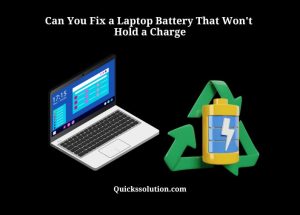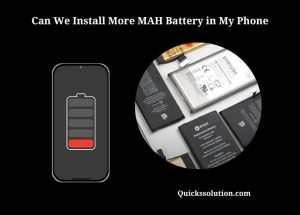Published on: June 15, 2023
Written by John Stevens / Fact-checked by Hashim Manna
Ever glanced at your device’s battery percentage and gasped in disbelief? You charged it to 100% just this morning, and now, by mid-afternoon, it’s down to 20%. We’ve all been there. If you’re a gadget enthusiast or someone who likes to personalize your device with a variety of widgets, you’ve probably asked this question: “Do widgets affect battery life?”

The short and sweet answer is yes, they do. But the long, intricate one requires a dive into the depths of device management, operating systems, and of course, widgets. So, let’s dive in!
Do Widgets Affect Battery Life: A Deep Dive
Defining Widgets
Before we delve into the main topic, it’s important to understand what widgets are. Simply put, they are small applications that provide easy access to frequently used functions or provide essential information right at your fingertips. Weather updates, calendar events, news headlines, or the latest tweets – these are all examples of widgets that you may have on your device.
However, these convenience tools come at a cost, and that cost may be your device’s battery life.
How Widgets Work
To fully grasp why widgets can affect battery life, we need to know how they operate. Unlike typical apps that you launch when needed and close when done, widgets work in the background. This means they’re always on, collecting data, updating themselves, and remaining ready for you to access at a moment’s notice.
Their continuous operation can take a toll on your battery. After all, a battery only has so much juice to give.
Operating Systems and Widgets
The impact of widgets on battery life also depends on your device’s operating system. Android and iOS, the two major players in the mobile OS market, handle widgets differently.
Android Widgets and Battery Life
Android has supported widgets since its early days, and they are a core part of the Android experience. However, some Android widgets continuously run in the background, consuming CPU resources and battery power even when you’re not using them. These include widgets that frequently update, like weather or news widgets.
iOS Widgets and Battery Life
iOS introduced widgets with iOS 14, and they function differently from Android widgets. Instead of continuously running in the background, iOS widgets update at specific intervals set by the operating system. This helps to conserve battery life, but frequent updates or many active widgets can still drain battery power over time.
Types of Widgets and Battery Consumption
Not all widgets are created equal. Some are notorious battery-drainers, while others have minimal impact. Let’s delve into the different types of widgets and their battery consumption patterns.
Data-Driven Widgets
Data-driven widgets are the most common culprits when it comes to draining battery life. These widgets require regular data updates to function, which means they often connect to the internet, refresh content, and consume battery power. Examples include social media widgets, weather widgets, or news feed widgets.
Static Widgets
Compared to their data-driven counterparts, static widgets are less demanding on battery life. These widgets don’t require constant updates and thus consume less power. Examples include clock widgets or photo album widgets.
Battery-Optimized Widgets
Some widgets are specifically designed to be battery-friendly. These widgets are programmed to limit their background activities or to perform them less frequently. Examples include certain task management widgets or note-taking widgets.
How to Minimize Widget Battery Usage
Even though widgets can impact battery life, it doesn’t mean we need to completely shun them. After all, widgets can be a great tool for productivity and convenience. Here are some strategies to manage widget use and optimize battery life.
Selective Widget Usage
One of the easiest ways to reduce battery drain from widgets is to be selective about which ones you use. Prioritize widgets that offer significant value and convenience. Uninstall or disable any widget that you rarely use or that provides redundant information.
Limit Data-Driven Widgets
As discussed earlier, data-driven widgets tend to be the most taxing on battery life. Consider reducing the number of these widgets or setting them to update less frequently if that’s an option.
Opt for Battery-Friendly Widgets
Whenever possible, choose widgets that are designed to be battery-friendly. These widgets often have options to reduce background data usage, limit update frequency, or pause updates altogether when the battery is low.
Monitor Widget Battery Consumption
Both Android and iOS provide options to monitor the battery usage of apps and widgets. Regularly checking this can help you identify any widget that is consuming more battery than expected.
FAQs
Now, let’s tackle some of the most frequently asked questions about widgets and battery life.
How Much Battery Life Do Widgets Consume?
Widgets can impact battery usage in widgets. While some widgets are designed to be efficient with power usage, others can be quite demanding. Factors like real-time data updates or animations can drain the battery faster. Users should be mindful of the widgets they choose and consider removing or adjusting those that excessively consume battery life.
1. Do all widgets drain battery?
No, not all widgets drain battery. Static and battery-optimized widgets tend to use less power compared to data-driven widgets. However, any widget can use up battery life if it is poorly coded or has a bug causing excessive power usage.
2. How can I check if a widget is draining my battery?
You can check this in your device’s settings. Both Android and iOS have a battery usage screen that shows which apps and widgets are using the most power.
3. Can I use widgets without worrying about battery life?
While it’s true that widgets can drain battery life, modern devices and operating systems have become much better at managing power consumption. If you’re careful about which widgets you use and how many you have, you can use widgets without significantly impacting your device’s battery life.
4. Do widgets use more battery than apps?
Not necessarily. It depends on how often you use the app and how much processing power it requires. A frequently used, resource-intensive app can use more battery than a static widget.
5. How often should a widget update to save battery life?
This can vary depending on the specific widget and your personal preferences, but a general rule of thumb is that less frequent updates will save battery life. For widgets that allow you to customize their update frequency, you might consider setting them to update every few hours instead of every few minutes.
6. Should I remove all my widgets to save battery life?
Not necessarily. If a particular widget is a significant drain on your battery, then it might be worth removing. But for most people, the convenience of having quick access to important information outweighs the minor battery usage of widgets.
Conclusion
So, do widgets affect battery life? Yes, they can. But with careful management and sensible choices, you can enjoy the convenience of widgets without worrying too much about your battery life. Be selective with your widgets, monitor their battery usage, and enjoy the benefits they bring to your digital experience.
Remember, the aim is not to eliminate the use of widgets entirely, but to strike a balance between convenience and battery conservation. In the end, you don’t have to sacrifice personalization for power. A smart and informed approach to using widgets can ensure that you continue enjoying the best of both worlds.
And there you have it – a comprehensive look at widgets and their impact on battery life. Armed with this knowledge, you can now make more informed decisions about which widgets to use and how to use them. Happy widgeting!
You might also like:




